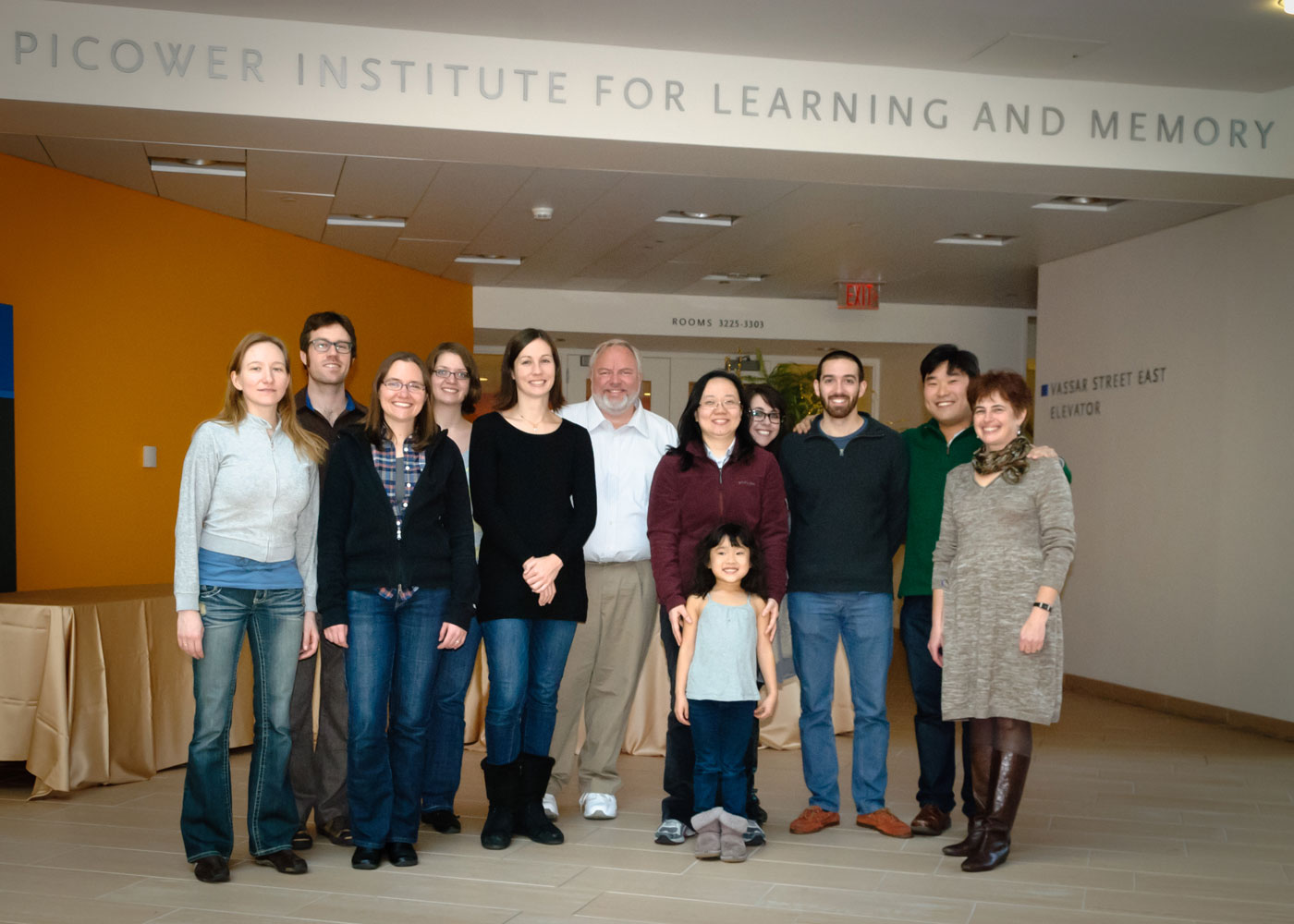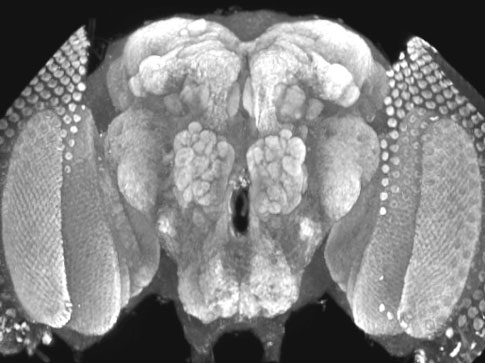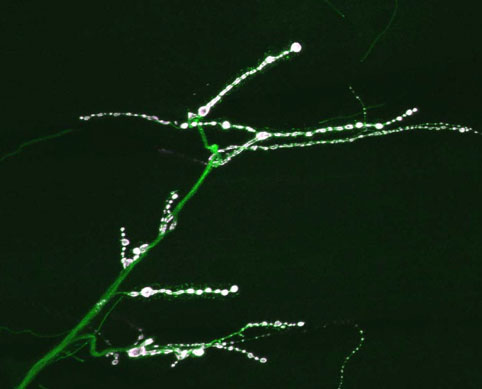|











| |
 The
computational power of the brain depends on synaptic connections that link
together billions of neurons. The focus of my laboratory's work is to
understand the mechanisms by which neurons form synaptic connections, how
synapses transmit information, and how synapses change during learning and
memory. To complement this basic research in neuroscience, we also study how
alterations in neuronal signaling underlie several neurological diseases,
including epilepsy, autism and Huntington’s Disease. We combine molecular biology,
protein biochemistry, electrophysiology, and imaging approaches with
Drosophila genetics to address these questions. Moving
beyond genomic data to determine how proteins specify the distinctive signaling
properties of neurons and enable them to interconnect into computational
circuits that dictate behavior are major goals for the next decade of
neuroscience research. Despite the dramatic
differences in complexity between Drosophila and humans, genomic analysis
has confirmed that key neuronal proteins and the functional mechanisms they
govern are remarkably similar. As such, we are attempting to elucidate
the mechanisms underlying synapse formation, function and plasticity using
Drosophila as a model system. By characterizing how neurons integrate
synaptic signals and modulate synaptic growth and strength, we hope to bridge
the gap between molecular components of the synapse and the physiological
responses they mediate. Further information on the lab and the projects we
are working on can be found from the links on the left. Be sure to drop by
the Life in the Lab picture page to see what the lab is doing when we're not
pushing flies or poking neurons. The
computational power of the brain depends on synaptic connections that link
together billions of neurons. The focus of my laboratory's work is to
understand the mechanisms by which neurons form synaptic connections, how
synapses transmit information, and how synapses change during learning and
memory. To complement this basic research in neuroscience, we also study how
alterations in neuronal signaling underlie several neurological diseases,
including epilepsy, autism and Huntington’s Disease. We combine molecular biology,
protein biochemistry, electrophysiology, and imaging approaches with
Drosophila genetics to address these questions. Moving
beyond genomic data to determine how proteins specify the distinctive signaling
properties of neurons and enable them to interconnect into computational
circuits that dictate behavior are major goals for the next decade of
neuroscience research. Despite the dramatic
differences in complexity between Drosophila and humans, genomic analysis
has confirmed that key neuronal proteins and the functional mechanisms they
govern are remarkably similar. As such, we are attempting to elucidate
the mechanisms underlying synapse formation, function and plasticity using
Drosophila as a model system. By characterizing how neurons integrate
synaptic signals and modulate synaptic growth and strength, we hope to bridge
the gap between molecular components of the synapse and the physiological
responses they mediate. Further information on the lab and the projects we
are working on can be found from the links on the left. Be sure to drop by
the Life in the Lab picture page to see what the lab is doing when we're not
pushing flies or poking neurons.
Littleton Lab, 2012

|




